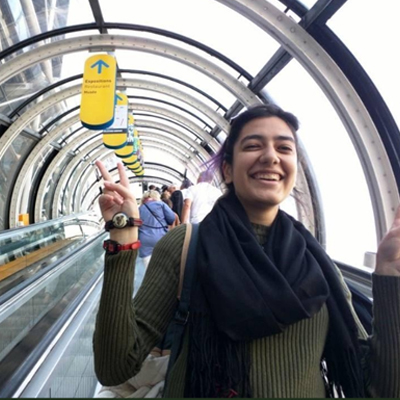MBL 551E Digital Culture in Creative Industries
2020-2021 Fall
This course introduces critical discourses on the use of digital design tools in creative industries (art, cinema, architecture, game and product design, cyber-space design) from behavioral, social, and economic perspectives. The key discussion topics are: distributed democracy, enhancing the public sphere, changing human behavior, mobility, interactivity, and identity; new placemaking and architecture; collaboration, networks, visual-auditory information systems; augmented reality, and emergent technologies.
Cyberspace and Architecture: Virtual Museum Experience
Esranur Demirtaş
In architecture, we use cyberspaces as tools for prototyping, for imitating or manipulating real objects in digital environments or we create different realities separately from real environments. Because of the flexibility of cyberspace, we can create new spatial experiences.
Over the last decade, various kinds of virtual museums have been developed either in the museums’ own physical environment or over the Internet, through both static and more interactive media such as serious (educational) games. Virtual museums offer the potential to immerse a visitor in an interactive environment, using telepresence to allow greater reach as well as the freedom to interact closely with exhibits. We discussed the cultural effects of these new kinds of museums and addressed these questions:
How do they affect our understanding of museums?
How do they affect our museum experience?
How do we respond to this new type of experience;
What are the discussions on virtual museum experience versus physical museum experience?
Alternate Reality Games
İrem Pilehvarian
Alternative Reality games are transmedia experiences which have elements inserted into real life. This presentation aims to explain and give a definition of these sorts of games. They are played by people around the world locating clues placed in the world. The purpose of discussing alternate reality games is to better understand the effects on design; people, how it creates a community, cooperation, immersion and how design will change accordingly.
Cybernetics in Architecture
Adel Gürel Gönülalçak
The digital design process is transformative, interactive and constructive. Until digital technology become essential in architecture, people were completely confined to physical spaces. However, over the past century, the relationship between humanity and the physical environment has gained an increasingly abstract understanding. The fact that technology started to become mobile has changed the perception of distance. With the emergence of the concepts that constitute cybernetics, architecture has started to transform the concept of space into spatial and multi-dimensional environments by going beyond the three-dimensional space. This transformation introduced the concept of cyber architecture, and now cyber architecture has begun to challenge the concepts of space and time.
The architect, who put forward his subjective perspective and personal sensitivities in the space design process, gradually undertakes the task of establishing interdisciplinary coordination within the relational network system. The architect who designs the space is now transforming into a system building architect or ensuring the continuity of systems.
Cellular Automata, Complexity and Singularity
Nur Sipahioğlu
This study focuses on Cellular Automata in terms of its history, influences on complexity and singularity. Cellular Automata is important as in the fact that broke the conception of certainty and turned the focus to algorithmic complexity. It changed our understanding of the sciences, society, technology and the world. What it indicates now is universality: A universal intelligence and cognition which are discussed under technological singularity.
Image: time-state diagram of cellullar automata using rule 30 and synchronous update scheme, David Cornforth
Smart Buildings: A Short Assessment
Dilan Öner
We are moving towards a system that knows where we work, who we meet with who knows where we live, what food we eat, what we watch, which route we walk, what we do monthly, and a technology that relates and makes sense them. While these technologies benefit us, how they endanger us and make us lazy are the primary research and study topics related to smart buildings.
Contributors
Copyright © Architectural Design Computing Graduate Program of Istanbul Technical University, Graduate School, Department of Informatics, 2021. No part of this site, [mbi.itu.edu.tr], may be reproduced in whole or in part in any manner without the permission of the copyright owner.





